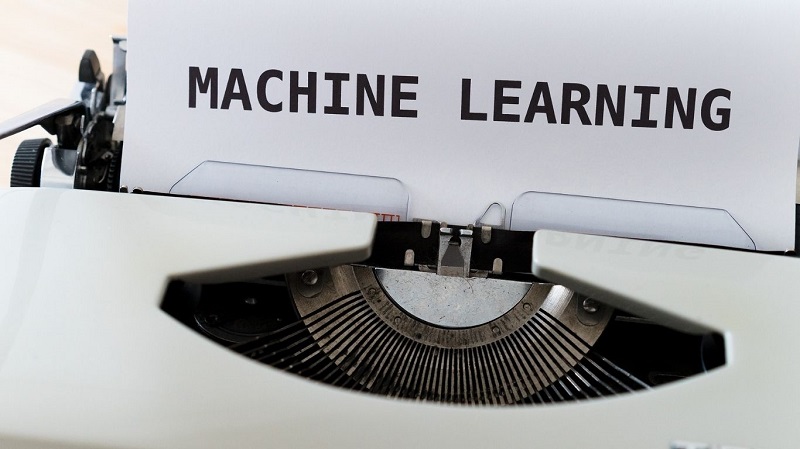Machine Learning algorithms enable us to create advanced technologies that can learn from previous experience and provide reliable data. The use of machine learning (ML) has grown dramatically in recent years, and as a consequence, professional opportunities are expected to grow as well.
Page Contents
Top Machine learning books to know more about
If you have no previous knowledge of ML but want to discover basic concepts and possibly start a career in this field, you should read the 10 best machine learning books listed below. They will be extremely useful in your future endeavors. Here’s a list of top 10 Machine learning books to know about. Lets read here
Machine Learning for Absolute Beginners: An Introduction in Plain English
Although we recognize that those going to read this list may have prior skills in the field, Machine Learning for Absolute Beginners walks through ML history and works in plain English with no coding experience required. What exactly are you going to learn? The fundamentals, such as decision trees, inferential analysis, data extraction, k-means, and more, will provide you with a solid foundation for understanding the key components used in Machine Learning and how they can be applied. Eventually, some career advice from Oliver, who talks you through career options and how to best apply the ML knowledge you just gained post-read.
The One-Hundred-Page Machine Learning Manual
What more could you want from The One-Hundred-Page Machine Learning Manual that covers all you need to know? Andriy, Gartner’s General manager of Data Science, believes that after reading this book, you will be ready to set up complex AI systems, pass an interview, or set up a business. The 2019 edition, which is among the best books on machine learning also accessible on Kindle, covers gradient descent, cluster analysis, dimensionality reduction, and other topics. Is it right for you? Andriy believes it is appropriate for both those involved in the area and those interested in learning more about the increasingly complex field of Machine Learning.
Probabilistic Graphical Models: Principles and Techniques
This book isn’t for beginners, nor the faint of heart as it dives right into probabilistic graphical models in detail, including Bayesian and Markov Networks, inference, and learning from complete/incomplete data. If you want to get the most out of these best books on machine learning, there’s an option to attend Daphne Koller’s lectures on Probabilistic Graphical Models at Stanford University, on Coursera. Fun fact, Koller is one of the founders of Coursera, an online education platform.
Grokking Deep Learning
Understanding Deep Learning is recommended as a good starting point for delving into the subset of Machine Learning, not only describing and explaining APIs and guidelines but also walking the reader about how to develop algorithms from scratch. This practical experience of writing will assist you in developing an AI capable of defeating you in a classic Atari game as well as Neural Networks capable of understanding basic images. While this is not a beginner’s source of guidance, calculus perception is not required; rather, a high school level of number sense is necessary.
Introduction to Machine Learning with Python: A Guide for Data Scientists
This 400-word Machine Learning python is among the best books for machine learning
provides a solid foundation in the fundamentals of ML, with a thorough and hands-on strategy for Python usage in Machine learning. Discover not only the most important concepts and algorithms, but also when and how to apply them. Machine learning workflow is covered, including data pre-processing and collaborating with data, as well as training algorithms, evaluating results, and implementing those algorithms into a production-level system.
Machine Learning Mathematics
This textbook is among the best books for machine learning, combines all of the basic mathematical tools required to understand machine learning, including linear algebra, analytic geometry, matrix decompositions, vector calculus, optimization, probability, and statistics, putting the normally disparate course style of teaching in Mathematics to shame. These ideas are then applied to four basic machine learning methods: Gaussian mixture models, linear regression, support vector machines, and principal component analysis These provide an excellent starting point for those new to the field as well as those looking for a refresher. This book includes examples and tests in addition to the textual data to enable the reader’s comprehension.
Machine Learning: A Bayesian and Optimization Perspective (Net Developers)
The book progresses from basic conventional methods to current trends, with chapters on statistical/Bayesian learning. pattern recognition, short courses on sparse modeling, statistical deep learning, and stochastic graphical models. Mean/Least-Squares analysis and filtering, Kalman filtering, stochastic approximation, online learning, Bayesian classification, decision trees, logistic regression, and boosting methods are covered, as are all of the major techniques you’ll know before working in the field. This book consists of analysis, code to innovate with, and more in addition to all of the conceptual text.
Neural Networks and Statistical Learning
In a statistical model, the book gives a complete introduction to Neural Networks and Machine Learning. It is a useful guide for future research that delves into popular models and frameworks. It provides several examples, which aids the reader in understanding a more realistic approach to the content. Multilayer perceptron, probabilistic Bayesian networks, fuzzy logic, recurrent neural networks, and other topics are enclosed. It is appropriate for technical and academic staff, postgraduates, and researchers.
Machine Learning: A Probabilistic Perspective
This text, according to Kevin, is a perfect introduction to machine learning approaches that use prediction models and inference as a unifying approach. This overview text consolidates breadth and depth, providing background material on topics such as probability, optimization, and linear algebra, as well as discussion of recent developments in the field, such as conditional random fields, L1 regularisation, and deep learning. Rather than providing a recipe book for various heuristic methods, the book emphasizes a principled model-based approach, frequently using the language of graphical models to specify models in a clear and precise manner. In addition, the software platforms used in the illustrations are freely accessible.
Pattern Recognition and Machine Learning
Pattern Recognition and Machine Learning by Christopher Bishop is one of the best machine learning books that presents estimated implication algorithms that allow for quick approximate answers in circumstances where accurate answers are not possible. Ahead of its time on pattern recognition to present the Bayesian viewpoint employs graphical models to explain posterior distribution, which was not evident in any other ML text at the time. In contrast to some of the other entries on this list, familiarity with multiple regression calculus and fundamental linear algebra is needed, as is some experience with likelihoods.











